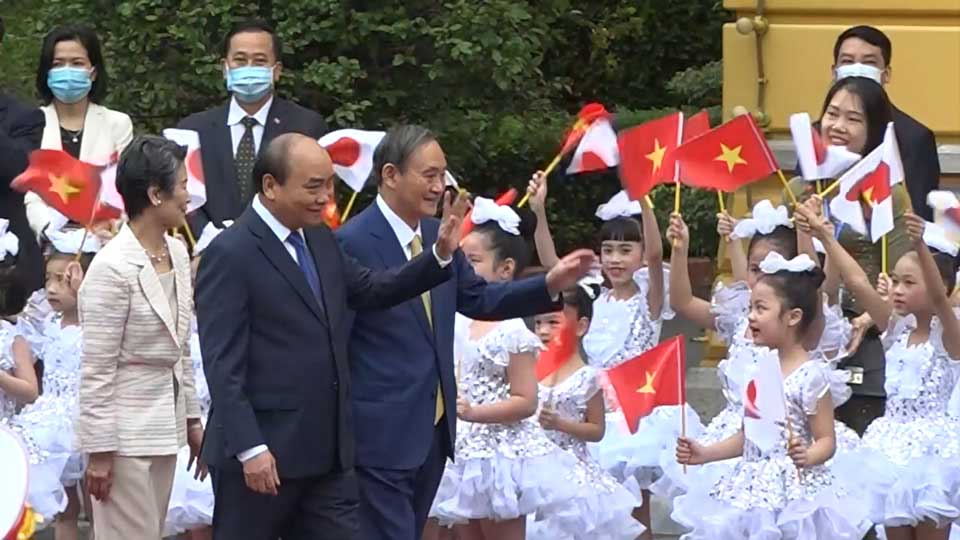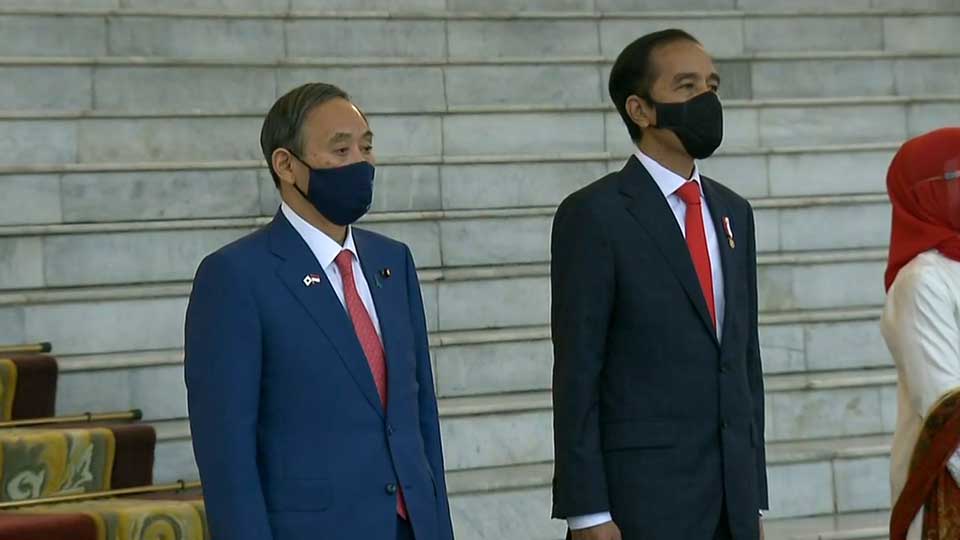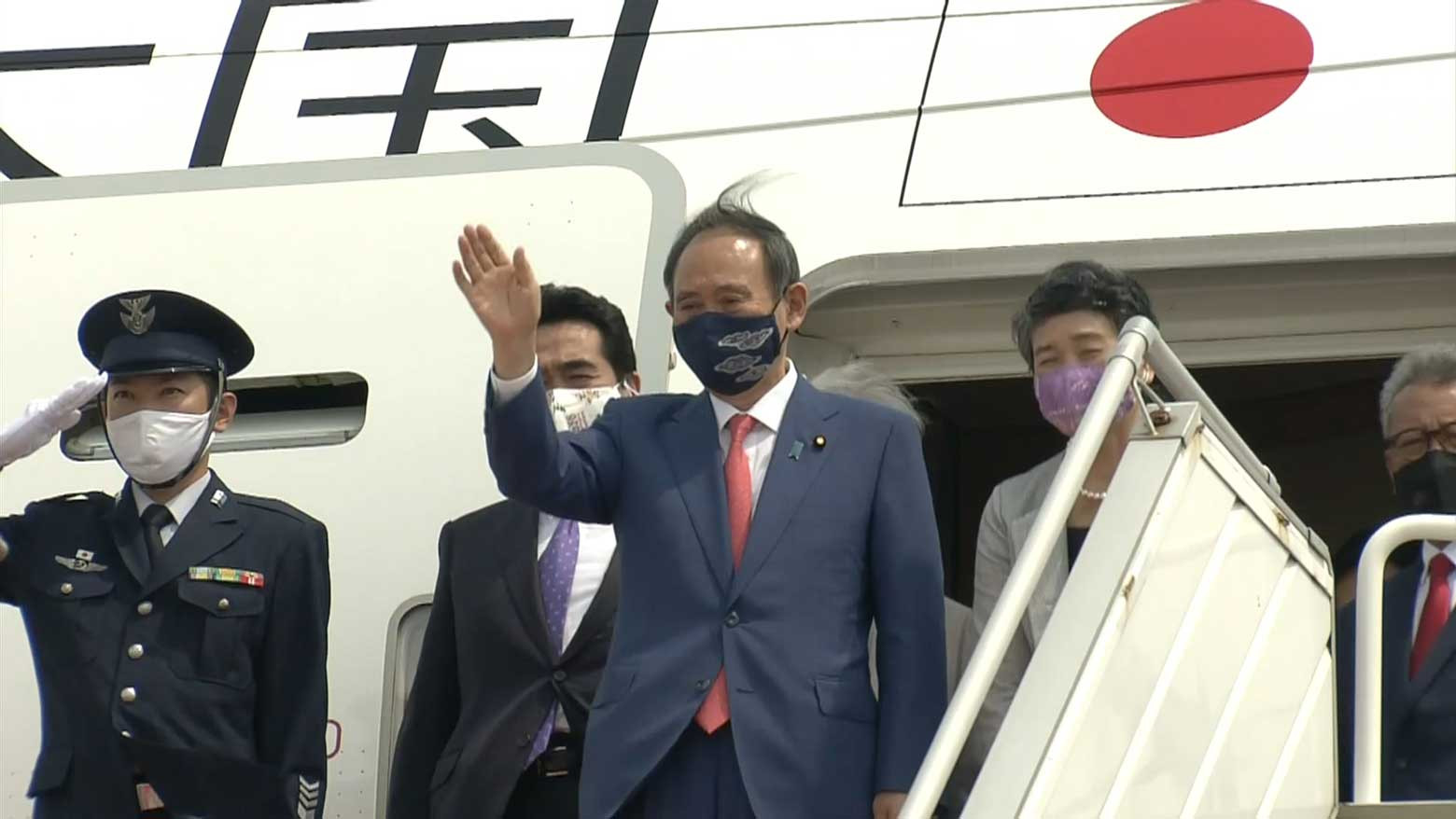Suga met with Vietnamese Prime Minister Nguyen Xuan Phuc and Indonesian President Joko Widodo on his first overseas trip as Japan’s premier.
One of the purposes of the trip was to signal his administration’s intention to continue one of Abe’s main foreign policy objectives: “a free and open Indo-Pacific region.” The approach aims to secure freedom of navigation and promote free trade in a vast area stretching from the Pacific to Indian Ocean. Suga says he plans to expand the initiative.
“Vietnam, which chairs ASEAN (the Association of Southeast Asian Nations) this year, is a pivotal partner in achieving a free and open Indo-Pacific,” Suga said on Monday after his meeting with Phuc.
For his part, Phuc referenced the project's importance in helping his country resolve a territorial dispute with Beijing in the South China Sea.
“We reconfirmed the importance of resolving disputes through peaceful means rather than force, in order to secure peace, stability, and freedom of navigation,” he said.

But strategic issues weren’t the only items on the agenda during the trip. Suga also spoke to both leaders about ways to deepen economic ties.
The coronavirus pandemic has revealed the extent to which the Japanese economy is reliant on Chinese manufacturing. When Beijing imposed strict shutdowns to prevent the spread of the virus earlier this year, grinding production to a halt, Japan was quickly faced with a serious face mask shortage. It imports more than 70% of its supply from China. And as the pandemic worsened and factories remained closed, the damage spread to Japanese automobile and electronics production.
The Japanese government is hoping to avoid similar economic disruptions in the future by diversifying its production bases. Suga has his eye on Southeast Asia, which offers low labor costs and existing infrastructure.
After his meeting with Widodo on Tuesday, Suga told reporters that Japan is offering about $470 million in loans to Indonesia to help the country limit the economic fallout of the pandemic. He says they also agreed to gradually relax travel restrictions between their countries -- particularly for business people, nurses and caregivers.

But Japan isn’t the only country trying to strengthen its ties in the region. China says it invested $6.23 billion in ASEAN economies in the first half of this year alone, a more than 50% increase from the same period last year. China’s trade activity with ASEAN is now nearly 15% of the country’s total, making the bloc Beijing’s biggest trading partner.
But Shiraishi Takashi, professor emeritus at Tokyo’s National Graduate Institute for Policy Studies, says investments alone won’t be enough to win the battle for regional influence.
“Trust is the key to successful diplomacy,” he says. “For Southeast Asian nations, economic cooperation with China is attractive, but this doesn't mean they have no interest in Japan.”
And for Suga, this means continuing full steam ahead with the Indo-Pacific initiative.
“We agreed to cooperate to build a peaceful and prosperous future for ASEAN and the Pacific region,” he said at the end of his trip. “Strengthening cooperation between Japan and ASEAN will serve as the cornerstone of economic prosperity in the region, as well as a free and open Pacific Ocean."

